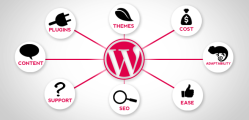In an ideal world, we would always receive ample warning before being asked to deliver an important presentation. It would be clearly marked on the calendar a week ahead, allowing plenty of time to work on the aesthetics, content, and delivery.
But that is not the nature of the industry. Often, we receive little time for preparation, with many presentations confirmed with just hours to spare. This means that we are often forced to craft presentations on the go. So how do you put together to a beautiful, eye-catching presentation in just 15 minutes?
Embrace Technology
With such a limited timeframe, you need all the assistance you can get. That means embracing AI and automating as much of the process as possible. Sites like: https://www.beautiful.ai/ have innovative presentation software that automatically updates slide design, an extensive library of presentation templates, and a wide selection of stock images to help you pull an aesthetically pleasing presentation together in minutes.
Build Sound Bites
When finalising the dialogue, identify the key messages you want to convey in the presentation and come up with a handful of soundbites. This means that even if you run out of time before you can come up with a script, you can get your key points across in a concise fashion with a handful of memorable and sharp sound bites.
Start with a Question or a Story
The most memorable speeches and presentations start with either a question or a story. If you tell a story, make it short, relevant and funny.
If you go with a question, ensure it guides audience participation and sets the scene for a presentation. For example, “how many of you have bought a mobile phone in the last 12 months?” will engage the audience by prompting them to raise their hands and ensure they are alert and ready to hear the rest of the presentation.
Finish with a Call for Action or a Call for Purpose
There is always a reason why you are giving the presentation. This should be apparent at the end of the presentation in the form of a call to action or a call for the purpose.
A call to action will implore the audience to take action. At the end of Al Gore’s presentation in An Inconvenient Truth, the former presidential candidate implores the audience to write to their local congressmen and women and Senators to pressure them into taking a strong stance against climate change. If that doesn’t work, he tells his viewers to run for office themselves.
This is a clear call for action and is what his presentation has been building to. Your call to action may be for your audience to visit your company’s website, subscribe to a mailing list, purchase a certain product, or vote a certain way.
Alternatively, your presentation could end with a call to purpose. This involves imploring the audience to make small changes in their lives in aid of a certain cause. It might be to live more mindfully, to adopt specific anger management strategies, or to consider the consequences for their actions, depending on the presentation.



Leave a Reply